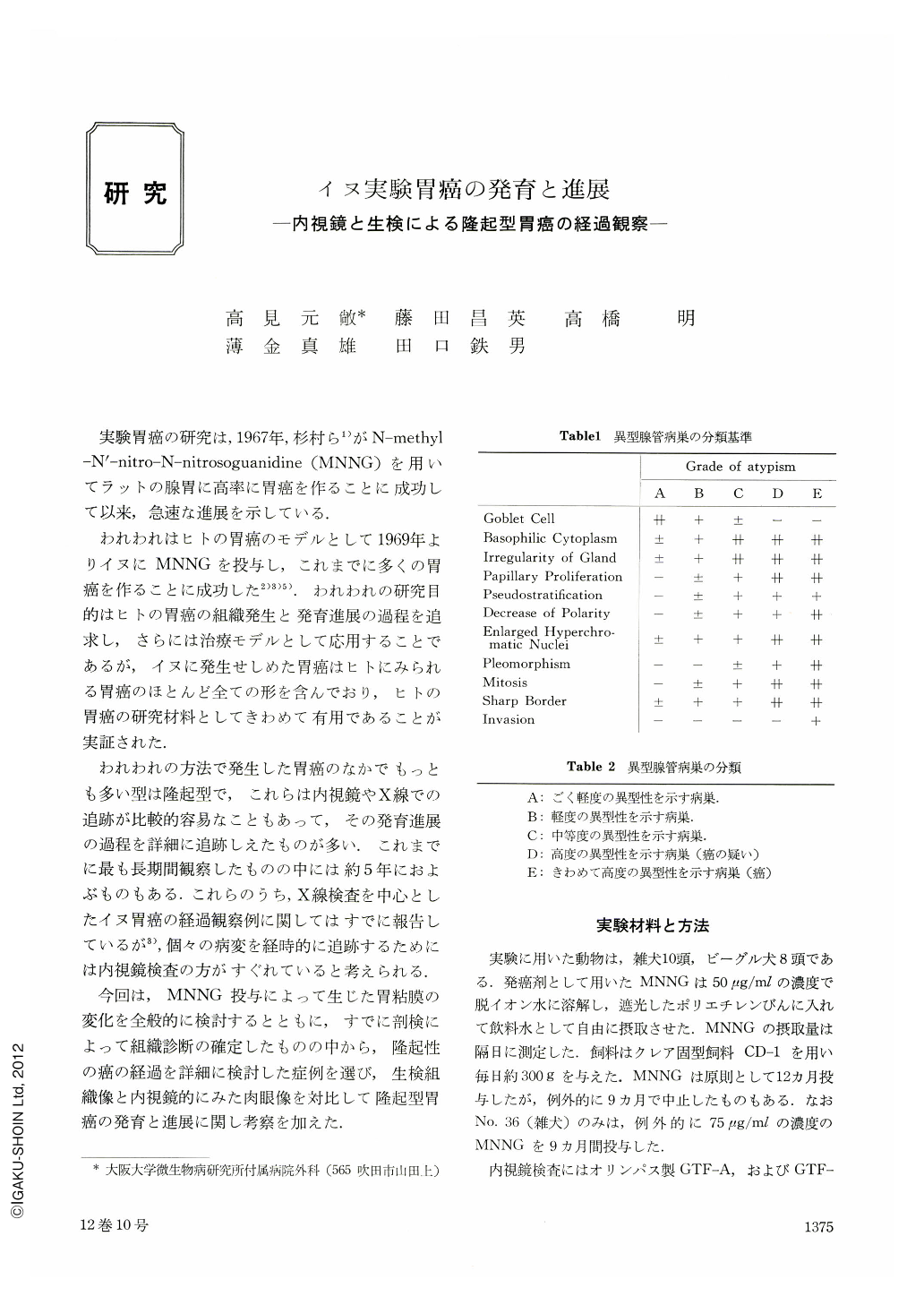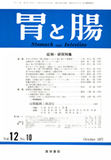Japanese
English
- 有料閲覧
- Abstract 文献概要
- 1ページ目 Look Inside
実験胃癌の研究は,1967年,杉村ら1)がN-methyl-N''-nitro-N-nitrosoguanidine(MNNG)を用いてラットの腺胃に高率に胃癌を作ることに成功して以来,急速な進展を示している.
われわれはヒトの胃癌のモデルとして1969年よりイヌにMNNGを投与し,これまでに多くの胃癌を作ることに成功した2)3)5).われわれの研究目的はヒトの胃癌の組織発生と発育進展の過程を追求し,さらには治療モデルとして応用することであるが,イヌに発生せしめた胃癌はヒトにみられる胃癌のほとんど全ての形を含んでおり,ヒトの胃癌の研究材料としてきわめて有用であることが実証された.
Eighteen dogs were orally adiministered with 50 μg/ml of N-methyl-N'-nitro-N-nitrosoguanidine (MNNG) for 12 months, and followed up by endoscopy and biopsy. Five of them were monitored in detail, autopsied, and then given histological examinations.
Almost all of the lesions were located on the anterior wall of the upper or mid-body of the stomach where severe erosive gastritis had occurred during administration of MNNG. We obtained 63 neoplasms in five dogs in which 34 lesions (56 per cent) were protruded. These protruded lesions appeared for the first time 10 months after the termination of MNNG administration. Some of them were found as type Ⅱb (flat) lesions with redness, and developed to type Ⅱa or Ⅰ (elevated) lesion.
We observed the development and growth of the canine stomach cancers for from 32 months to 47 months and obtained new information about the growth of protruded lesions as follows :
1. Biopsy examination proved that carcinomatous lesions occurred "de novo" and grew up to type Ⅰ early carcinoma through type Ⅱb and Ⅱa.
2. The grade of atypism of the elevated lesions never changed from benign to malignant during biopsy study.
3. The cancerous lesions, grew more rapidly than less atypical lesions.

Copyright © 1977, Igaku-Shoin Ltd. All rights reserved.


